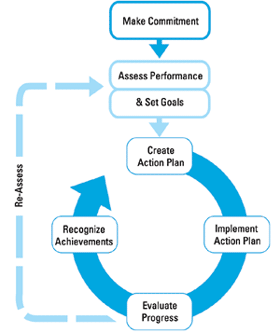Sustainable Water Infrastructure Contacts
Pacific Southwest, Region 9
Serving: Arizona, California, Hawaii, Nevada, Pacific Islands, Tribal Nations
Water & Energy Efficiency by Sectors
| Sustainable Water Infrastructure Quick Finder | ||||
|---|---|---|---|---|
| FundingGreen Jobs in the Water SectorLow Impact Development | Waste To Biogas Mapping ToolWater Conservation/EfficiencyWater-Energy Connection | Water Loss ControlWhy Sustainability? | ||

Businesses
On this page:
EPA Programs & Resources
Additional Resources
- Alliance for Water Efficiency’s
 Resource Library strives to provide the best on-line resources on water conservation and efficiency.
Resource Library strives to provide the best on-line resources on water conservation and efficiency. - People use lots of water for drinking, cooking and washing, but even more for producing things such as food, paper, cotton clothes, etc. Water Footprinting
 looks at both direct and indirect water use of a consumer or producer. The water footprint of an individual, community or business is defined as the total volume of freshwater that is used to produce the goods and services consumed by the individual or community or produced by the business.
looks at both direct and indirect water use of a consumer or producer. The water footprint of an individual, community or business is defined as the total volume of freshwater that is used to produce the goods and services consumed by the individual or community or produced by the business. - Additional links provided by WaterSense
- Food Service Technology Center
 is the industry leader in commercial kitchen energy efficiency and appliance performance testing.
is the industry leader in commercial kitchen energy efficiency and appliance performance testing. - Savings by Design
 offers services and incentives to help these California decision makers raise energy performance to a top priority.
offers services and incentives to help these California decision makers raise energy performance to a top priority. - In Waste Not, Want Not: The Potential for Urban Water Conservation in California
 the Pacific Institute quantifies the potential for water conservation and efficiency improvements in California’s urban sector, where around 20 percent of the state’s water is used to meet commercial, industrial, institutional, and residential needs.
the Pacific Institute quantifies the potential for water conservation and efficiency improvements in California’s urban sector, where around 20 percent of the state’s water is used to meet commercial, industrial, institutional, and residential needs. - The WaterSmart Guidebook: A Water Use Efficiency Plan and Review Guide for New Businesses provides information on water-saving technologies applicable in the commercial, industrial, and institutional sectors and is intended for use as a resource by: existing and new businesses, developers, consultants, and designers planning agencies; and water providers.
- The Pacific Institute's Water Scarcity and Climate Change: Growing Risks for Businesses and Investors identifies water-related risks specific to eight key industries, including electric power, high-tech, beverage, agriculture, apparel, biotechnology/ pharmaceutical, forest products, and metals/mining firms.
You will need Adobe Reader to view some of the files on this page. See EPA's PDF page to learn more about PDF, and for a link to the free Adobe Reader.
What Is Commercial Water Use?
Commercial water users provide a product or service. Commercial water uses—like hotels, hospitals, schools, and offices—use significant quantities of water in restrooms, kitchens, and landscaping as well as for cooling, washing and other purposes.
How Can Water and Energy Be Used More Efficiently?
Saving energy saves water. EPA’s EnergyStar program offers a proven strategy for superior energy management with tools and resources to help each step of the way.
STEP 1: Make Commitment STEP 2: Assess Performance STEP 3: Set Goals STEP 4: Create Action Plan STEP 5: Implement Action Plan STEP 6: Evaluate Progress STEP 7: Recognize Achievements |
 |
The Department of Energy’s A Consumers Guide Energy Efficiency and Renewable Energy also provides ample information on how to use energy more efficiently in the workplace, particularly for office buildings.
Renewable energy options—like solar, geothermal, and wind—use negligible amounts of water compared to conventional sources of energy (e.g. coal and nuclear); investing in renewables invests in water conservation! EPA’s Green Power Partnership supports the organizational procurement of green power by offering expert advice, technical support, tools and resources.
Does your facility need to heat water? Solar process-heating systems are designed to meet the need for large quantities of hot water or space heating at commercial, industrial, and institutional buildings.
Also known as a water survey, a water audit is an excellent way to understand your current water use and future water savings. Generally, a water audit provides a detailed description of your facility’s water use, identifies potential water and financial savings, and recommends various water efficiency upgrades. Your local water district or public utility may provide you with a free water audit. If not, you can hire a consultant to conduct a water audit. Additionally, the WBCSD’s Global Water Tool ![]() is a free and easy-to-use tool for companies and organizations to map their water use and assess risks relative to their operations and supply chains.
is a free and easy-to-use tool for companies and organizations to map their water use and assess risks relative to their operations and supply chains.
Products that meet WaterSense criteria for water efficiency and performance carry a special label. When you use products bearing the WaterSense label in your kitchens, bathrooms and landscape, you can expect exceptional performance, savings on your water bills, and assurance that you are saving water for future generations. You can also save water by hiring certified water efficiency professionals, like WaterSense landscape irrigation professionals, Green Plumbers ![]() , and rainwater catchment professionals
, and rainwater catchment professionals ![]() .
.
The EPA’s Green Infrastructure program has compiled information about various technologies & approaches, research, models & calculators, and case studies. You can save water and energy as well as improve water quality with green infrastructure.
Implementing an EMS is a major way your facility can be run more sustainably. Need help? The EPA’s Sector Strategies Program achieves performance improvement and burden reduction in 13 sectors by addressing their unique issues and challenges in a collaborative setting. Climate Leaders is an EPA industry-government partnership that works with companies to develop comprehensive climate change strategies.
Are you using water and energy efficiently? EPA would like to recognize your important contribution! The Water Efficiency Leader Awards recognize organizations and individuals for their leadership and innovation in water efficient products and practices. ENERGY STAR’s Partner of the Year Awards recognize partners’ special achievements in transforming their markets to ENERGY STAR. EPA presents these awards at the annual ENERGY STAR Awards banquet and reception in Washington D.C.
Case Studies
- The Hyatt Regency (Australia)
 has reduced water use from 140,000,000 liters in 1996 to 54,583,000 in 2000. The conservation program has projected to annually save $85,372!
has reduced water use from 140,000,000 liters in 1996 to 54,583,000 in 2000. The conservation program has projected to annually save $85,372! - Section 7 (pg. 77) of A Water Conservation Guide for Commercial, Institutional and Industrial Users
 provides various commercial, institutional, and industrial water conservation case studies.
provides various commercial, institutional, and industrial water conservation case studies. - By reducing outdoor water use (via planting natives plants, reducing fountain operation times, and installing an ET irrigation system) and indoor water use (via installing waterless urinals and infrared sensor faucets), Cisco Systems (PDF) (17 pp, 2.1M) saves more than 81 million gallons of water each year in California alone.
- The Canadian Mortgage and Housing Corporation
 has compiled case studies demonstrating water reuse and innovative waste treatment technologies as an alternate means of reducing water consumption.
has compiled case studies demonstrating water reuse and innovative waste treatment technologies as an alternate means of reducing water consumption.
If you would like to suggest or provide additional resources, please contact Charlotte Ely (Ely.Charlotte@epa.gov).
